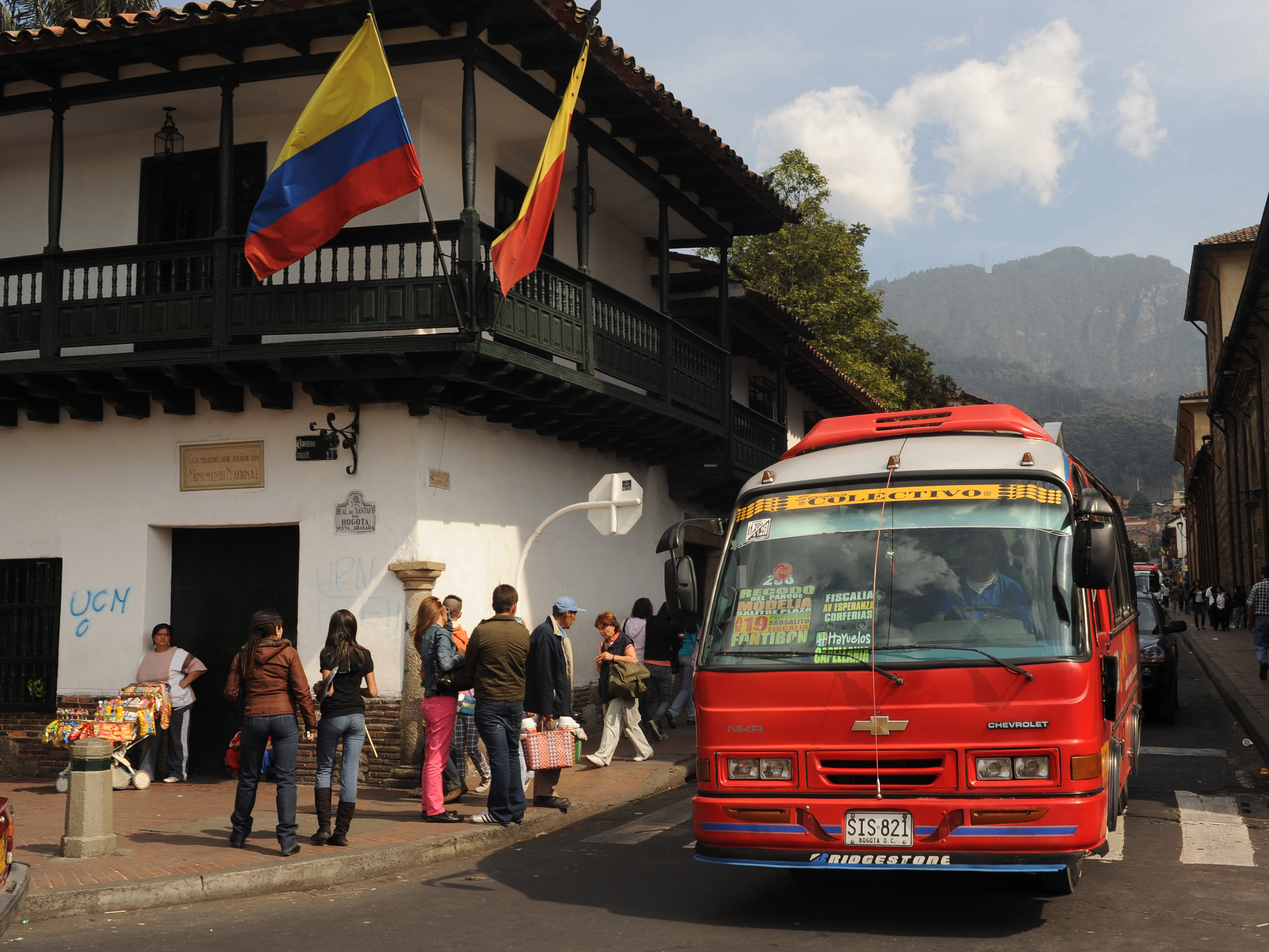- Bogotá, the capital of Colombia, doesn’t have an underground metro.
- It does have the TransMilenio, which moves 2.4 million passengers every day.
- On a recent reporting trip to the country, I got the chance to appreciate how efficient the TransMilenio is compared to New York City’s bus system.
Bogotá, the capital of Colombia, doesn’t have an underground metro.
Instead, its eight million residents get around on the bus system, which is called the TransMilenio. It moves 2.4 million passengers every day.
The TransMilenio has also been hailed as a triumph in public transit – 9% of its passengers used to commute by their own cars. Now, they take the bus. And the TransMilenio, in replacing the previous bus system in 2000, has helped boost air quality in Bogotá by 40%.
On a recent reporting trip to Bogotá, I took the TransMilenio around. It was often just as quick as taking an Uber or taxi, but much cheaper.
I also take buses around New York City sometimes. Compared to New York, the buses in Bogotá were cheaper, newer, and cleaner. They ran more frequently and I felt safer on them. Rather than being treated as an afterthought, the bus system is prioritized in Bogotá as a transport method that can move millions of people in a week.
Here's my experience on the TransMilenio:
My travel guide to Colombia warned me that gridlock in Bogotá was stifling. When I arrived and started walking around the capital, I quickly learned that my guidebook was very accurate.

Ubers, which actually run illegally in Colombia, sometimes took forever because of the traffic. But the TransMilenio, Bogotá's bus system, runs in its own bus lane. That bypasses a lot of gridlock.

I walked to my first trip to the TransMilenio with my friend, an American who has lived in Colombia for almost two years. She knows the city well and usually takes the TransMilenio to get around.

As an alternative to crossing hectic streets with crosswalks, Bogotá has lots of suspended passenger bridges over major roadways. They look like this.

They also provide a great view of the city.

My friend and I were traveling to Lake Guatavita, a lake considered sacred by the area's indigenous people, the Muisca. It's 35 miles northeast of Bogotá. To get there, we could leave from Portal del Norte, a TransMilenio hub.

Bogotá has been populated for millennia by indigenous folks like the Muisca, and the city was founded in 1538. But its public transit is still pretty new. The TransMilenio, replacing an outdated bus system, was founded in 2000.

Once we arrived at the Portal del Norte station, we waited in line to fill up our transit cards. One ride costs around 63 cents — inexpensive for an American, but fare hikes have historically caused protests in the city.

Source: CityLab
Then we scanned our cards...

... and we were on the bus!

After a few hours, we got to the small town where we would take a taxi to see Lake Guatavita. It was an incredibly cheap, efficient way to get out of town.

During my time in Bogotá, I usually had a comfortable ride during off-peak times. But during rush hour it can get pretty crowded. That's also stirred up public contempt among Bogotá residents, many of whom say the city needs an underground subway.

Source: The City Fix
My experience on Bogotá's TransMilenio showed me just how valuable buses can be. Its system covers an astounding 85% of the city, while the proposed underground metro in Bogotá would cover just 8%. Meanwhile, the TransMilenio's infrastructure investment was more than half of what the underground subway would cost.

Source: The City Fix
Buses are cost effective and efficient. But in New York, I typically think of buses as the secondary choice to the subway. I rarely take them unless I'm traveling within Brooklyn, but even then, they come so infrequently and off-schedule that I often just take Ubers.

New York City's buses are some of the least efficient in the country, according to a Curbed NY report. A report from the city's Comptroller found that ridership in Manhattan fell by 16% from 2011 to 2017.

Source: Curbed
Still, the lack of subway is challenging in a Bogotá is challenging. It has some of the worst gridlock in South America.

Source: Railway Technology
That's going to change soon — the Bogotá Metro is slated to open in 2022 running along the city's most hectic street. It will cost more than $4 billion.

The mayor of Bogotá pledged in 2018 that "by the year 2030, 80% of Bogotá citizens will have a mass transit line, metro or trunk lines less than a kilometer away."

Source: Railway Technology
Until then, I found that the TransMilenio — one of the most successful bus systems in the world — does an excellent job of taking folks from Point A to Point B.

Source: The City Fix

